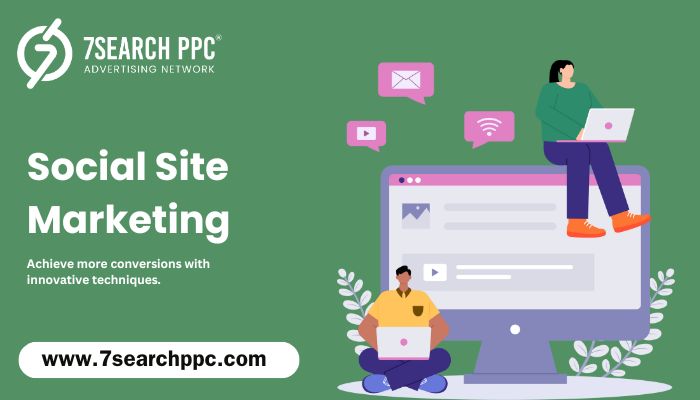Banner ads are a versatile and effective tool in social site marketing , helping brands increase visibility and drive engagement. Here's how they can be strategically utilized:

Placement on Social Ad Networks: Leveraging social ad networks such as Facebook, Instagram, and Google Display Network ensures banner ads reach the right audience.
These networks offer advanced targeting options, allowing businesses to show banner ads to users based on their interests, demographics, and behavior. Placing banner ads on high-traffic areas within social platforms can help boost exposure and brand recall.
Optimizing with CPM and PPC Models: Banner ads can be optimized through cost-per-thousand impressions (CPM) and pay-per-click (PPC) models, depending on campaign goals. CPM is effective for brand awareness, as it focuses on maximizing reach, while PPC is ideal for driving specific actions, like app downloads or site visits, as businesses only pay when users click. This flexibility allows marketers to tailor banner ads based on both budget and objectives.
Integrating with Native Ads: Combining banner ads with native ads can enhance user experience. While banner ads draw attention with visuals, native ads blend seamlessly with content, offering a balanced approach. This combination can increase engagement, as users see the brand in both prominent and subtle placements, reinforcing brand recognition without being intrusive.
Creative and Responsive Design: Effective banner ads in social site marketing need to be visually engaging and optimized for mobile and desktop views. Animated banners or those with a clear call-to-action (CTA) tend to perform well. Responsive designs ensure that banner ads look good on all devices, capturing more attention across user demographics.
In summary, using banner ads alongside CPM, PPC, and native ad strategies within social ad networks helps create a well-rounded social site marketing campaign that can drive brand awareness, engagement, and conversions.
Placement on Social Ad Networks: Leveraging social ad networks such as Facebook, Instagram, and Google Display Network ensures banner ads reach the right audience.
These networks offer advanced targeting options, allowing businesses to show banner ads to users based on their interests, demographics, and behavior. Placing banner ads on high-traffic areas within social platforms can help boost exposure and brand recall.
Optimizing with CPM and PPC Models: Banner ads can be optimized through cost-per-thousand impressions (CPM) and pay-per-click (PPC) models, depending on campaign goals. CPM is effective for brand awareness, as it focuses on maximizing reach, while PPC is ideal for driving specific actions, like app downloads or site visits, as businesses only pay when users click. This flexibility allows marketers to tailor banner ads based on both budget and objectives.
Integrating with Native Ads: Combining banner ads with native ads can enhance user experience. While banner ads draw attention with visuals, native ads blend seamlessly with content, offering a balanced approach. This combination can increase engagement, as users see the brand in both prominent and subtle placements, reinforcing brand recognition without being intrusive.
Creative and Responsive Design: Effective banner ads in social site marketing need to be visually engaging and optimized for mobile and desktop views. Animated banners or those with a clear call-to-action (CTA) tend to perform well. Responsive designs ensure that banner ads look good on all devices, capturing more attention across user demographics.
In summary, using banner ads alongside CPM, PPC, and native ad strategies within social ad networks helps create a well-rounded social site marketing campaign that can drive brand awareness, engagement, and conversions.




